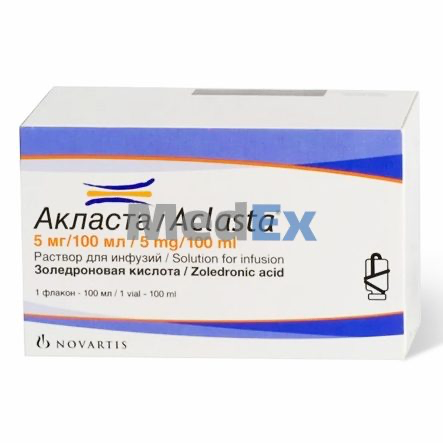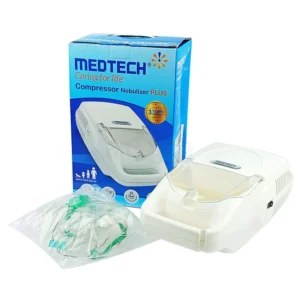Description
- Treatment and prevention of postmenopausal osteoporosis
- Treatment to increase bone mass in men with osteoporosis
- Treatment and prevention of glucocorticoid-induced osteoporosis
- Treatment of Paget’s disease of bone in men and women
Limitations of Use: Optimal duration of use has not been determined. For patients at low-risk for fracture, consider drug discontinuation after 3 to 5 years of use.
Pharmacology
Dosage
Prevention of Osteoporosis in Postmenopausal Women: The recommended regimen is a 5 mg infusion given once every 2 years intravenously over no less than 15 minutes.
Osteoporosis in Men: The recommended regimen is a 5 mg infusion once a year given intravenously over no less than 15 minutes.
Treatment and Prevention of Glucocorticoid-Induced Osteoporosis: The recommended regimen is a 5 mg infusion once a year given intravenously over no less than 15 minutes.
Treatment of Paget’s Disease of Bone: The recommended dose is a 5 mg infusion. The infusion time must not be less than 15 minutes given over a constant infusion rate.
Re-treatment of Paget’s Disease: Re-treatment with Zoledronic Acid may be considered in patients who have relapsed, based on increases in serum alkaline phosphatase, or in those patients who failed to achieve normalization of their serum alkaline phosphatase, or in those patients with symptoms, as dictated by medical practice.
Calcium and Vitamin D Supplementation: Instruct patients being treated for Paget’s disease of bone on the importance of calcium and vitamin D supplementation in maintaining serum calcium levels, and on the symptoms of hypocalcemia. All patients should take 1500 mg elemental calcium daily in divided doses (750 mg two times a day, or 500 mg three times a day) and 800 international units vitamin D daily, particularly in the 2 weeks following Zoledronic Acid administration.
Instruct patients being treated for osteoporosis to take supplemental calcium and vitamin D if their dietary intake is inadequate. An average of at least 1200 mg calcium and 800-1000 international units vitamin D daily is recommended.
Administration
- Zoledronic Acid injection must be administered as an intravenous infusion over no less than 15 minutes
- Patients must be appropriately hydrated prior to administration of Zoledronic Acid
- Parenteral drug products should be inspected visually for particulate matter and discoloration prior to administration, whenever solution and container permit
- Intravenous infusion should be followed by a 10 mL normal saline flush of the intravenous line
- Administration of acetaminophen following Zoledronic Acid administration may reduce the incidence of acute-phase reaction symptoms.
Method of Administration-
- The Zoledronic Acid infusion time must not be less than 15 minutes given over a constant infusion rate
- The intravenous infusion should be followed by a 10 mL normal saline flush of the intravenous line
- Zoledronic Acid solution for infusion must not be allowed to come in contact with any calcium or other divalent cation-containing solutions, and should be administered as a single intravenous solution through a separate vented infusion line
- If refrigerated, allow the refrigerated solution to reach room temperature before administration. After opening, the solution is stable for 24 hours at 2°C to 8°C
Interaction
Loop diuretics: May increase risk of hypocalcemia.
Nephrotoxic drugs: Use with caution.
Drugs primarily excreted by the kidney: Exposure may be increased with renal impairment. Monitor serum creatinine in patients at risk.
Contraindications
- Hypocalcemia
- Patients with creatinine clearance less than 35 mL/min and in those with evidence of acute renal impairment
- Hypersensitivity to any component of Zoledronic Acid
Side Effects
Pregnancy & Lactation
Precautions & Warnings
- Hypocalcemia may worsen during treatment. Patients must be adequately supplemented with calcium and vitamin D.
- Renal Impairment: A single dose should not exceed 5 mg and the duration of infusion should be no less than 15 minutes. Renal toxicity may be greater in patients with underlying renal impairment or with other risk factors, including advanced age or dehydration. Monitor creatinine clearance before each dose.
- Osteonecrosis of the Jaw (ONJ) has been reported. All patients should have a routine oral exam by the prescriber prior to treatment.
- Atypical Femur Fractures have been reported. Patients with thigh or groin pain should be evaluated to rule out a femoral fracture.
- Severe Bone, Joint, and Muscle Pain may occur. Withhold future doses of Aclasta if severe symptoms occur.







Reviews
There are no reviews yet.